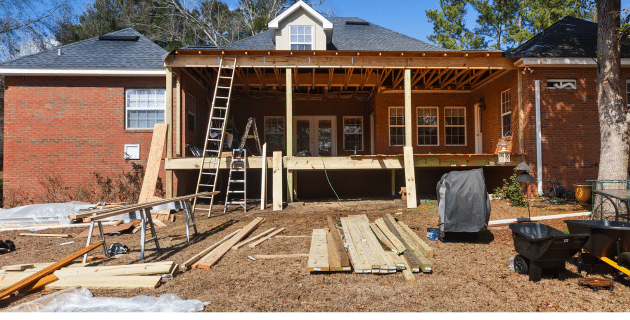You’re ready to upgrade your kitchen or build that deck. Remodeling is a great way to add value to your home. If you’re planning a renovation project, there’s something you’ll want to do first. Review your homeowner’s policy. That way you can make any changes to ensure you’ll be fully covered.
There are several ways insurance can factor into home renovations, but you’ll want to check the specifics. Then you’ll know what is covered and what is not:
- If your home is damaged during remodeling
- If someone gets hurt during remodeling
- If your home is not up to code
- If the remodel increases the value of your home/property
If your home is damaged during remodeling…
You may hire a contractor for your home renovation. Make sure they carry the right insurance. This includes workers’ compensation, property damage, and personal liability. Ask to see a copy of your contractor’s insurance policies. Look for a commercial business/general liability policy and for a workers’ comp policy. Take a photo of the documents for your records. If your contractor is not insured, he or she or their staff could sue you if injured.
If someone gets hurt during remodeling…
If you are doing a DIY remodel with the help of family or friends, you’re responsible for their safety. Make sure your liability coverage is enough. Consider increasing liability limits in case someone gets injured. Personal Liability protects you if a claim is made or a suit brought against you for bodily injury or property damage and you are found to be legally liable. Liability covers you at your place or anywhere in the world. If you are found liable, the policy will pay up to its limit of liability for damages for which an insured is legally liable. This can include medical expenses, lost wages, pain and suffering, and permanent scarring. The policy also provides a defense in court, if needed, for the policyholder. This is at the insurance company’s own expense.
If your home is not up to code…
Insurance only pays if there is a covered loss, not for renovating or remodeling. However, if you are rebuilding your house due to a covered loss, and you need to bring your home up to code, insurance can help. Add an endorsement for Ordinance or Law coverage to bring your home up to current building codes for repairs and/or rebuilding. Again, this endorsement only provides coverage if there is a covered loss and you are required to bring it up to code. The contract automatically includes 10% of your coverage A but the endorsement can be added to increase that percentage.
If the remodel increases the value of your home…
Your homeowner’s insurance is designed to repair and/or replace your home should it be damaged by a covered loss. When you renovate your home, your improvements have increased its value. Don’t make the mistake of thinking your original insurance will cover it. Make sure you are fully covered for the new value of your home if you must replace or rebuild it in the future.
Your insurer may require you to notify them within 30 days of completion of any improvements, alterations or additions to the building insured under Coverage A which will increase the replacement cost of your home by 5% or more.
Dwelling Coverage
Talk to the service department at your insurer about increasing your dwelling coverage. Dwelling refers to the structure of your home and includes the roof, walls, floorboards, cabinets, and bath fixtures. The easiest way to think about it is that if you could tip your house upside down, the dwelling is everything that remains attached.
Attractive Nuisance
Does your renovation include an attractive nuisance? Attractive nuisance is a term used to describe anything that might attract children and present a potential danger to them. Examples include trampolines, swimming pools, and playground equipment. If you added any of these during your renovation, be sure that you are (a) secured against access to them with a fence and locked gate and (b) covered for them under your policy.
Personal Property Coverage
You may need to increase coverage for personal possessions if you purchased items as part of the renovation or since your last policy update. Personal property coverage protects your possessions, such as furniture, clothes, sports equipment, and other personal items. Again, if you could tip your home upside down, everything that would fall out is considered personal property. This coverage protects these items whether they are in your house or off premises.
Speak with your insurer’s service department to see if you need to change your coverage limits.
Your insurer has a built-in tool that helps them estimate the replacement cost of your home. They update the information into the system, which provides the new rebuild cost. While a renovation can increase your premium, certain improvements can help to reduce payments. These include security systems, or a new roof. Ask about discounts, too. California Casualty offers discounts to nurses, educators, and first responders.
This article is furnished by California Casualty, providing auto and home insurance to educators, law enforcement officers, firefighters, and nurses. Get a quote at 1.866.704.8614 or www.calcas.com.
- California Casualty Earns Financial Stability Rating® of A, Exceptional, From Demotech, Inc. - April 28, 2025
- Music & Arts Grant Recipients – 2024 - December 13, 2024
- Understanding Auto and Home Insurance Rate Changes - December 3, 2024

